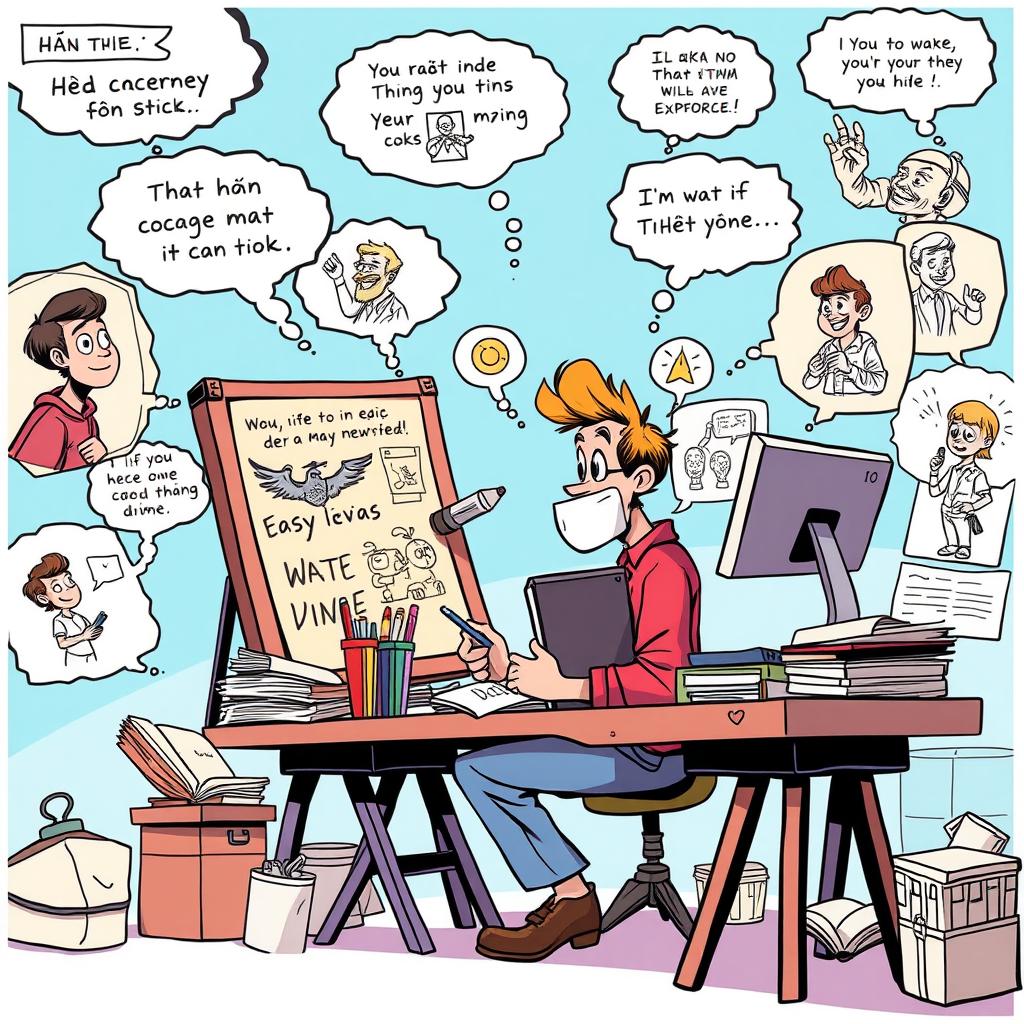How to Create a Hilarious and Engaging Comic That Stands Out
Introduction
Are you ready to bring your comic creation skills to the next level? Crafting a successful comic involves more than just drawing funny pictures—it’s about storytelling, character development, and understanding what makes your audience laugh. In this guide, we’ll explore six essential steps to help you create comics that resonate with readers and leave them eagerly anticipating the next panel. Let’s dive in!
Define Your Comic’s Theme & Tone
Before putting pen to paper (or stylus to tablet), it’s crucial to establish the foundation of your comic.
- Why Theme Matters: A well-defined theme gives your comic focus and purpose. Is your story about friendship, adventure, or satire? Knowing this will shape every decision you make.
- Tone Sets the Mood: Decide whether your comic is lighthearted, sarcastic, whimsical, or something else entirely. Consistency in tone helps readers know what to expect—and love—about your work.
By clearly defining these elements early on, you’ll ensure your comic has a strong identity from the very first page.
Create Relatable, Exaggerated Characters
Characters are the heart of any great comic. They need to feel real enough for readers to connect with while being exaggerated enough to spark laughter.
- Make Them Memorable: Think about quirks, habits, or flaws that set your characters apart. These traits can become running gags or key plot points.
- Balance Relatability and Absurdity: While exaggeration is key, grounding your characters in some form of reality ensures they remain relatable. For example, a clumsy hero who always drops their sword might frustrate themselves in ways readers recognize all too well.
Great characters drive humor and engagement, so invest time in developing them thoroughly.
Use Simple, Clear Dialogue
Dialogue is one of the most powerful tools in your comic-writing arsenal. Keep it concise and impactful to maximize its effect.
- Less Is More: Avoid lengthy monologues; instead, use short, snappy lines that pack a punch.
- Show, Don’t Tell: Use visual cues alongside dialogue to convey emotions and actions. This creates a richer reading experience without overwhelming the reader.
Remember, good dialogue enhances both the narrative and comedic timing of your comic.
Add Unexpected Twists for Humor
Humor often comes from subverting expectations. Incorporating unexpected twists keeps your readers engaged and laughing.
- Play With Predictions: If your audience thinks they know where the story is going, surprise them! For instance, if a character seems destined to win a race, have them trip over their own shoelaces at the finish line.
- Mix Genres: Blend genres like sci-fi and romance or horror and comedy to create fresh, unpredictable scenarios.
Twists keep your comic dynamic and entertaining, encouraging readers to stick around for the payoff.
Master Visual Timing and Pacing
The pacing of your comic directly affects how engaging it feels. Mastering visual timing ensures each joke lands perfectly.
- Control Panel Layout: Experiment with panel sizes and arrangements to control the speed at which readers consume information. Larger panels slow down the action, while smaller ones quicken the pace.
- Pause for Effect: Sometimes, silence speaks louder than words. Leave blank panels or pauses before delivering punchlines to heighten anticipation.
Effective pacing turns an ordinary sequence into a memorable moment.
Test Your Comic on Real Audiences
No matter how confident you feel about your comic, feedback from real readers is invaluable.
- Share Early Drafts: Don’t wait until your comic is “perfect” to share it. Post drafts online or show them to friends to gather constructive criticism.
- Pay Attention to Reactions: Note which jokes land best and which fall flat. Adjust accordingly to refine your style.
Testing your work builds resilience and improves your ability to craft content that resonates with your target audience.
Call to Action
Creating a standout comic requires dedication, creativity, and a willingness to learn from your audience. By following these steps—defining your theme, crafting memorable characters, using clear dialogue, adding unexpected twists, mastering pacing, and testing your work—you’ll be well on your way to producing comics that captivate and entertain.
Now it’s your turn! Start brainstorming ideas, sketch out those first panels, and don’t forget to share your progress with others. The world needs more hilarious and engaging comics—why not let yours be one of them?






